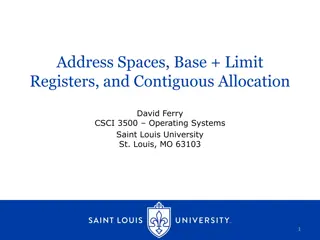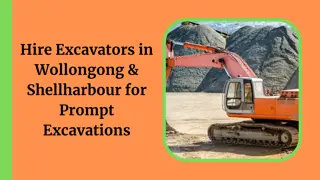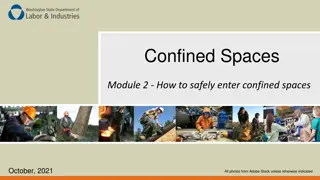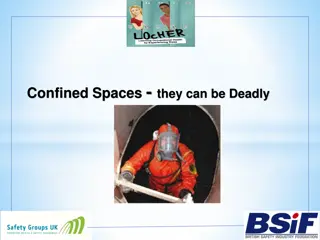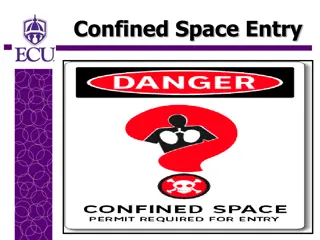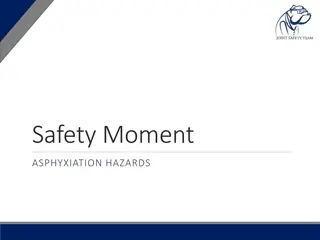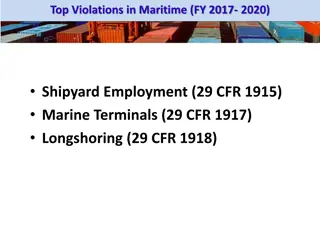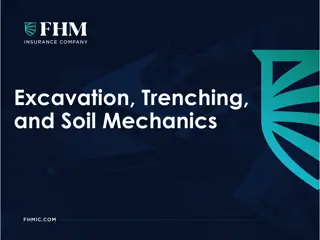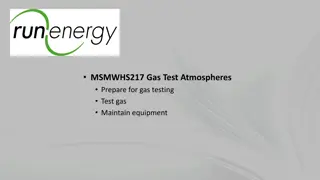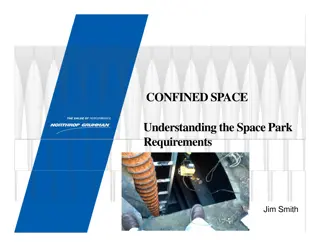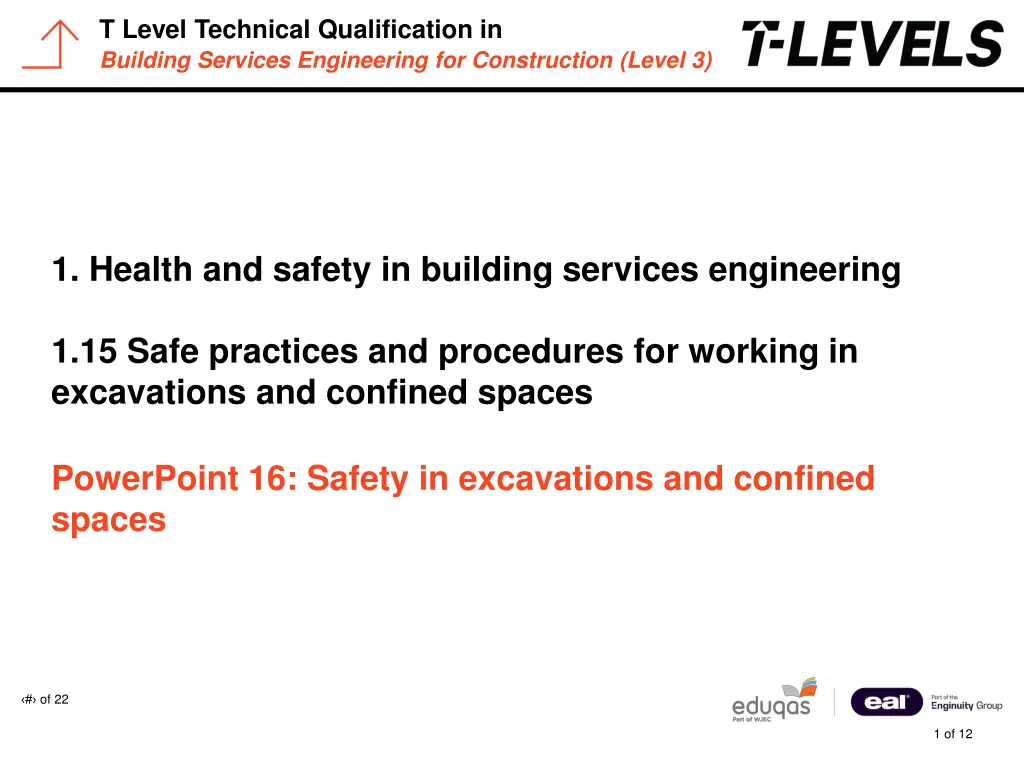
Safe Practices and Procedures for Excavations and Confined Spaces in Building Services Engineering
"Learn about safe practices and procedures for working in excavations and confined spaces in building services engineering. Understand the dangers associated with excavations, the importance of planning and risk assessment, and safety measures to prevent harm. Gain insights into working in trenches, potential dangers, and safety protocols to ensure a secure work environment. Explore various excavation scenarios and safety precautions to protect health and well-being while working on construction sites."
Download Presentation

Please find below an Image/Link to download the presentation.
The content on the website is provided AS IS for your information and personal use only. It may not be sold, licensed, or shared on other websites without obtaining consent from the author. If you encounter any issues during the download, it is possible that the publisher has removed the file from their server.
You are allowed to download the files provided on this website for personal or commercial use, subject to the condition that they are used lawfully. All files are the property of their respective owners.
The content on the website is provided AS IS for your information and personal use only. It may not be sold, licensed, or shared on other websites without obtaining consent from the author.
E N D
Presentation Transcript
T Level Technical Qualification in Building Services Engineering for Construction (Level 3) PowerPoint presentation 1.15 Safe practices and procedures for working in excavations and confined spaces 1. Health and safety in building services engineering PowerPoint 16: Safety in excavations and confined spaces # of 22 1 of 12
T Level Technical Qualification in Building Services Engineering for Construction (Level 3) Objectives By the end of the session learners should be able to: understand the dangers associated with working in excavations and confined spaces describe the safe working practices required when working in excavations and confined spaces. # of 22 2 of 12
T Level Technical Qualification in Building Services Engineering for Construction (Level 3) Excavations Working in trenches may be required on construction sites. The danger comes from collapse and falling objects. If you need to work in an excavation, the job must be: planned risk assessed managed supervised. These steps are required to ensure that there is no harm to your health when you are working in an excavation. # of 22 3 of 12
T Level Technical Qualification in Building Services Engineering for Construction (Level 3) Excavations There are many situations where you may find yourself working in excavations, including: sewers foundations underground service mains drains wells plant rooms. Before beginning work in any of these areas, careful planning is required. # of 22 4 of 12
T Level Technical Qualification in Building Services Engineering for Construction (Level 3) Excavations Dangers associated with excavations flooding obstruction of an escape route explosion collapse buried services. OPEN TRENCH # of 22 5 of 12
T Level Technical Qualification in Building Services Engineering for Construction (Level 3) Excavations: Safety Measures All excavations deeper than 1.2m must have their sides supported to ensure they do not collapse. Other factors to be aware of are: type of ground that is being dug access and egress storage of the spoil dug out of the excavation vehicle stops second emergency exit ladder warning notices Excavation sites must have a barrier to ensure nobody falls into the excavation. OPEN TRENCH # of 22 6 of 12
T Level Technical Qualification in Building Services Engineering for Construction (Level 3) Excavations When you are digging and excavating, for example, to install an incoming water main, always check the type of ground that is being dug. Clay tends to be firmer. Sandy soil tends to collapse more easily. If the ground is soft, the sides of the excavation should be sloped. Always think: safety first! # of 22 7 of 12
T Level Technical Qualification in Building Services Engineering for Construction (Level 3) Confined spaces A confined space is a place which is substantially enclosed (though not always entirely), and where serious injury can occur from hazardous substances or conditions within the space or nearby (eg lack of oxygen). Think: health and safety first! Can I get out if something goes wrong? The safety of personnel is paramount, so a suitable emergency escape route must always be maintained, and communication with people outside the confined space must always be possible. # of 22 8 of 12
T Level Technical Qualification in Building Services Engineering for Construction (Level 3) Confined spaces There may be many instances where you will be required to work in a confined space, such as: flues chimneys roof areas sewers attics under suspended floors. Working in these cramped conditions can be challenging. # of 22 9 of 12
T Level Technical Qualification in Building Services Engineering for Construction (Level 3) Confined spaces The dangers associated with working in a confined space are: inadequate ventilation inadequate lighting flooding obstruction of an escape route explosion. CONFINED SPACE ENTRY BY PERMIT ONLY # of 22 10 of 12
T Level Technical Qualification in Building Services Engineering for Construction (Level 3) Confined spaces Before working in a confined space, consider the following: Have I been trained? Should I be working alone? Am I wearing the correct PPE? Is there adequate lighting? Is there adequate ventilation? Am I aware of the situation and associated hazards? Before you begin, consider whether you can give satisfactory answers to the above questions to ensure the work can be completed safely. # of 22 11 of 12
T Level Technical Qualification in Building Services Engineering for Construction (Level 3) Any questions? # of 22 12 of 12


